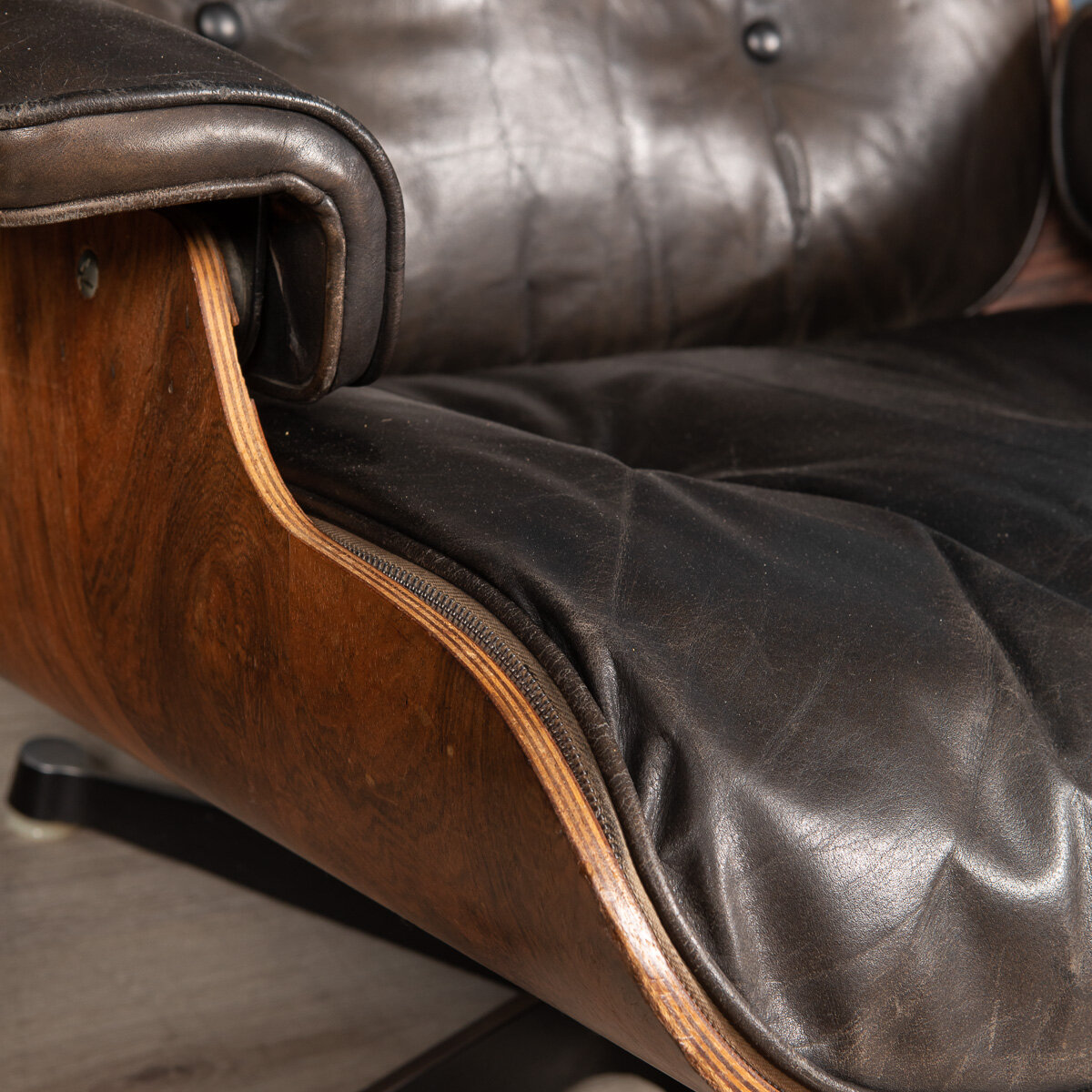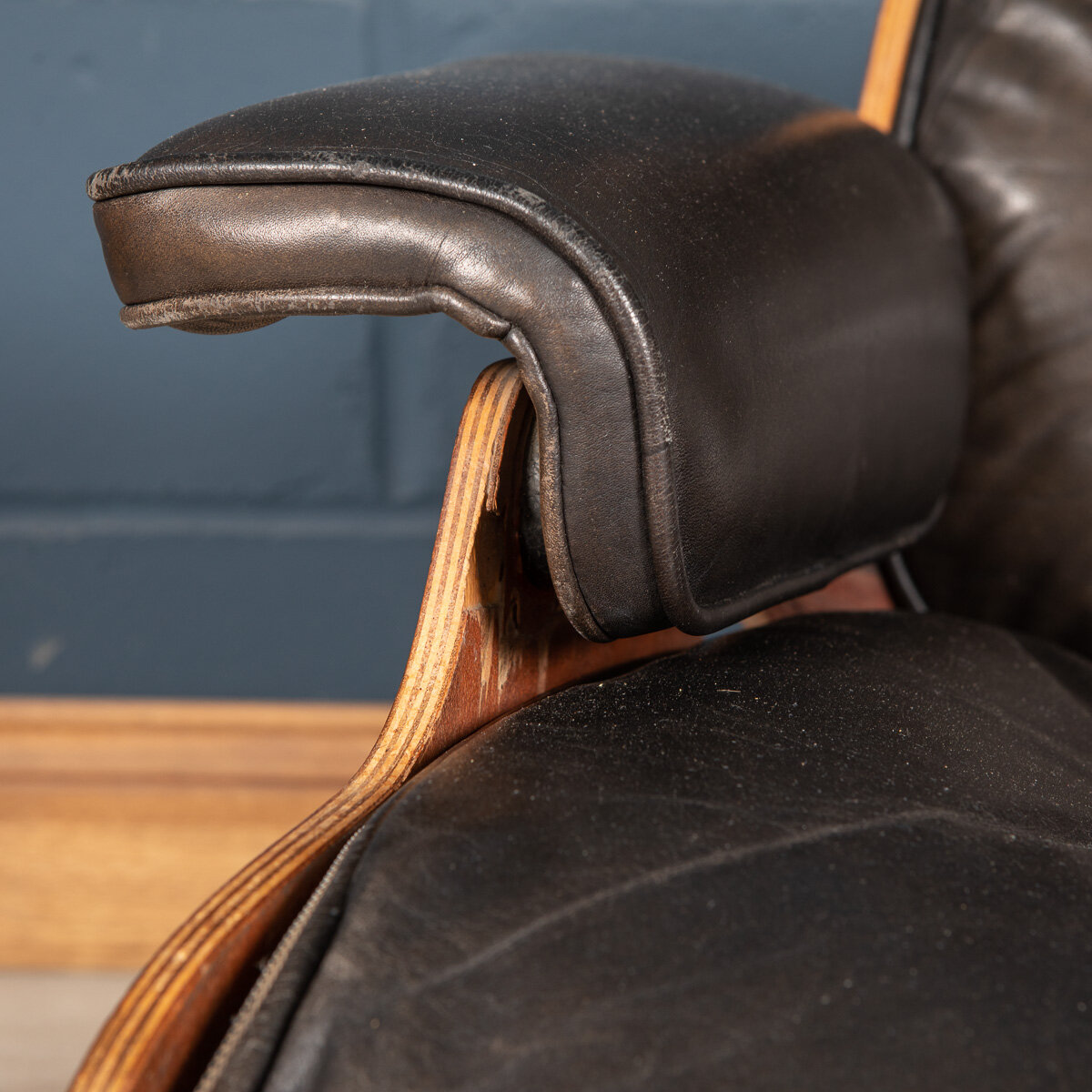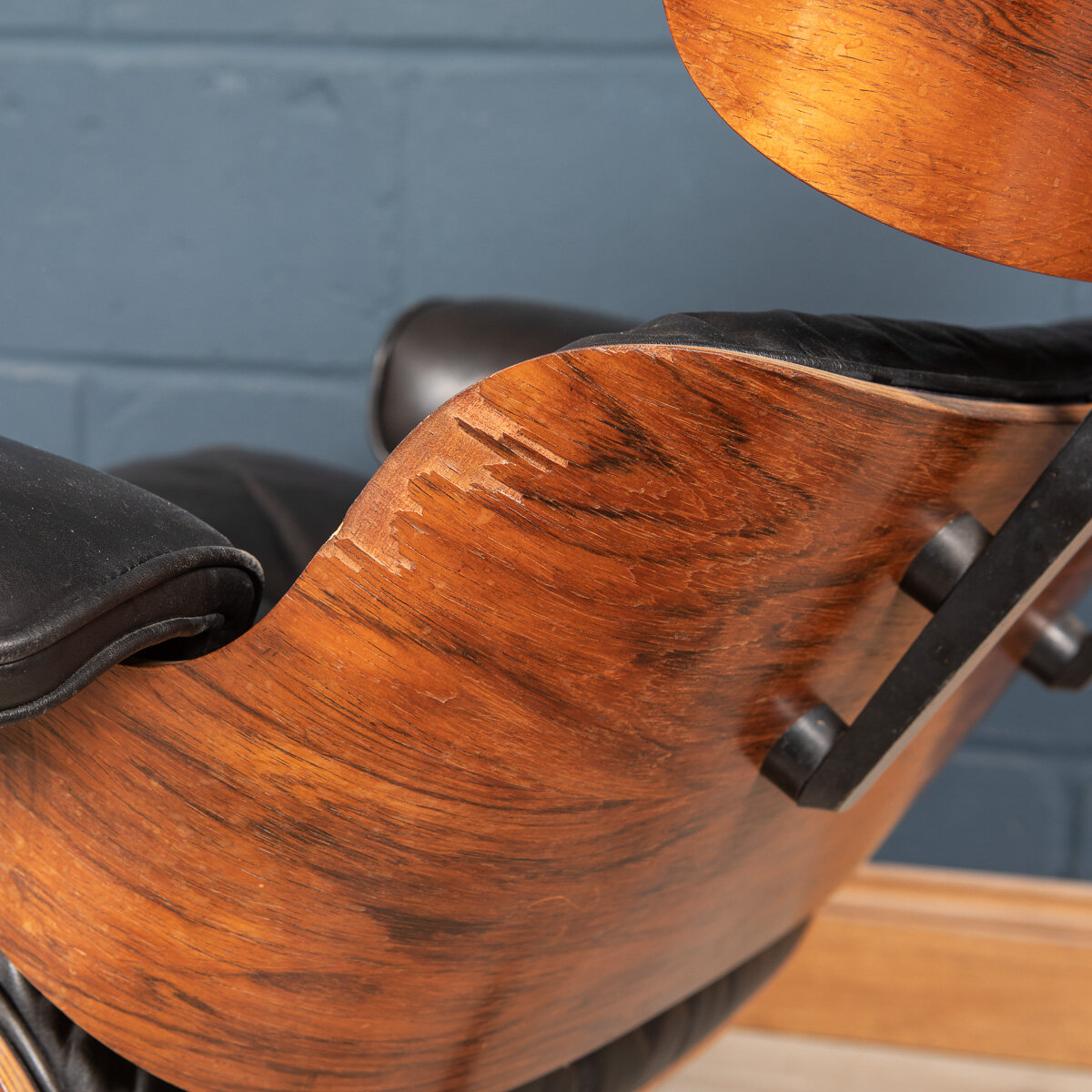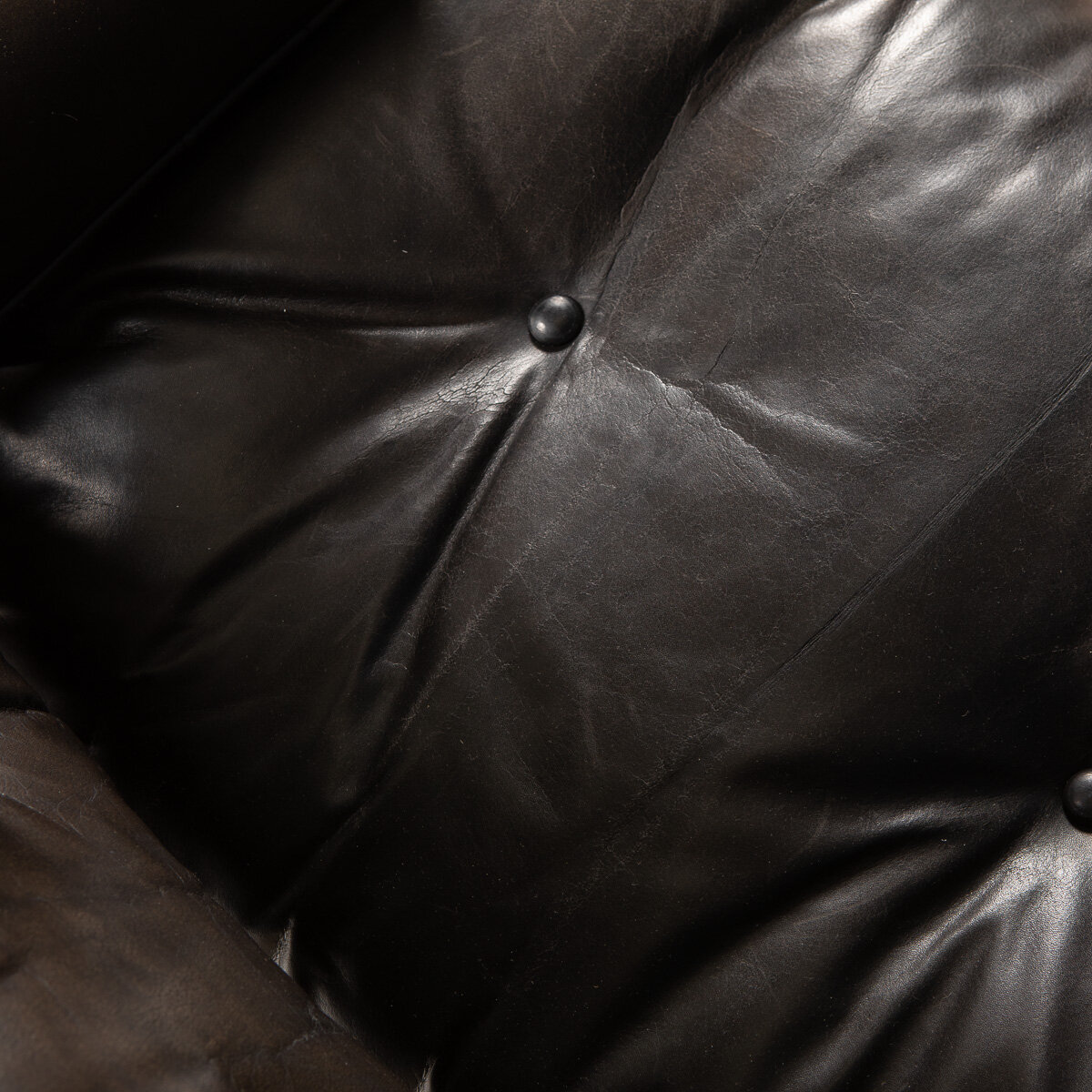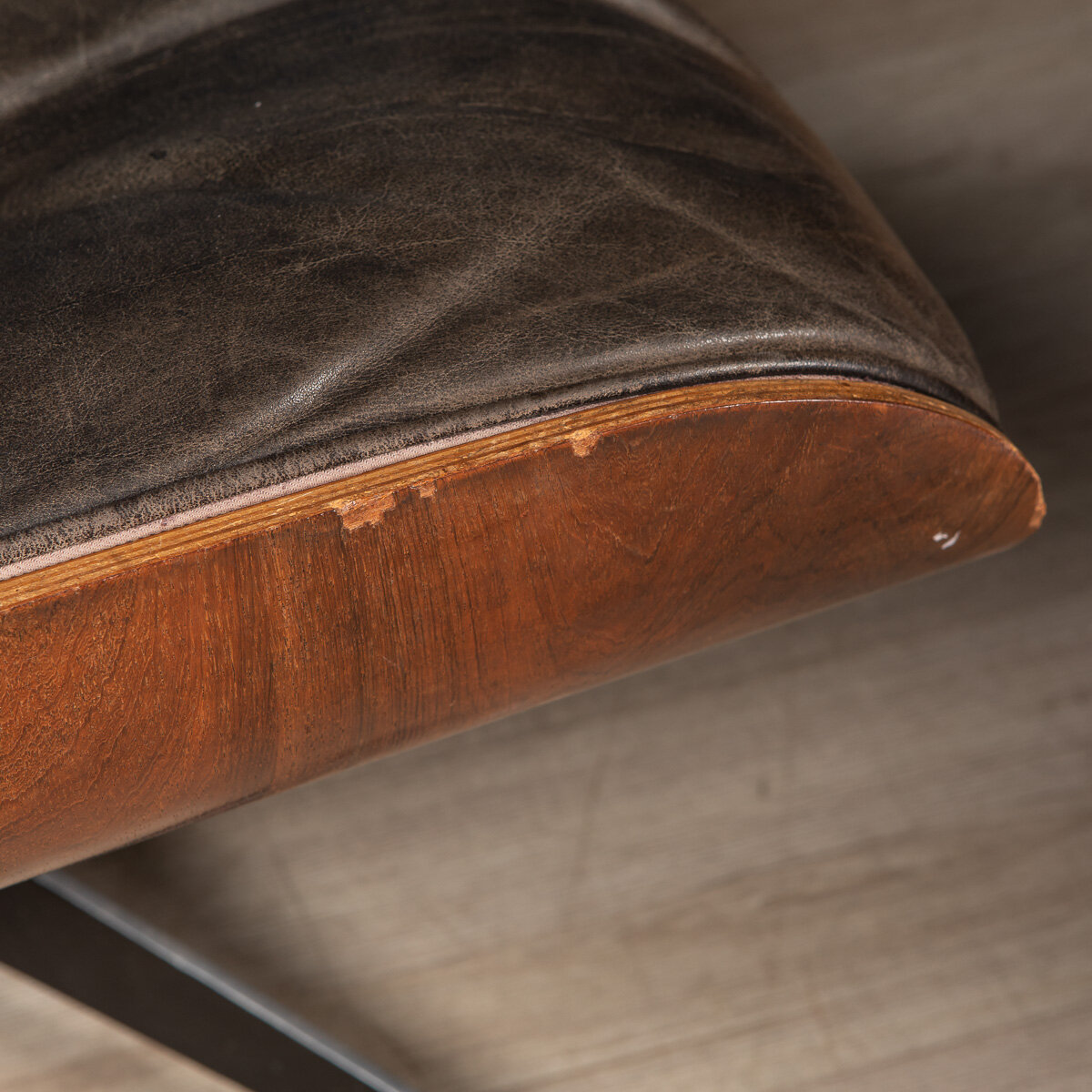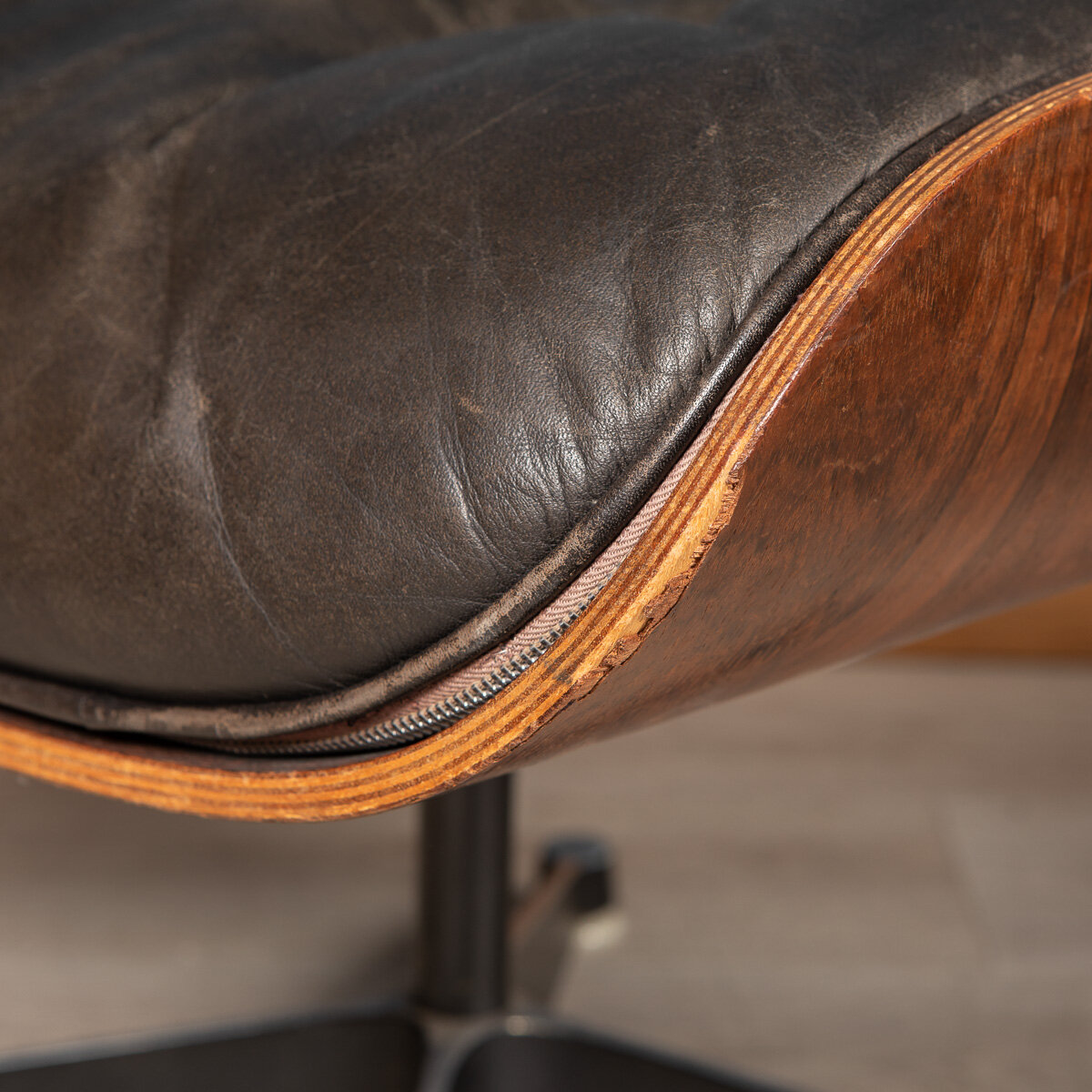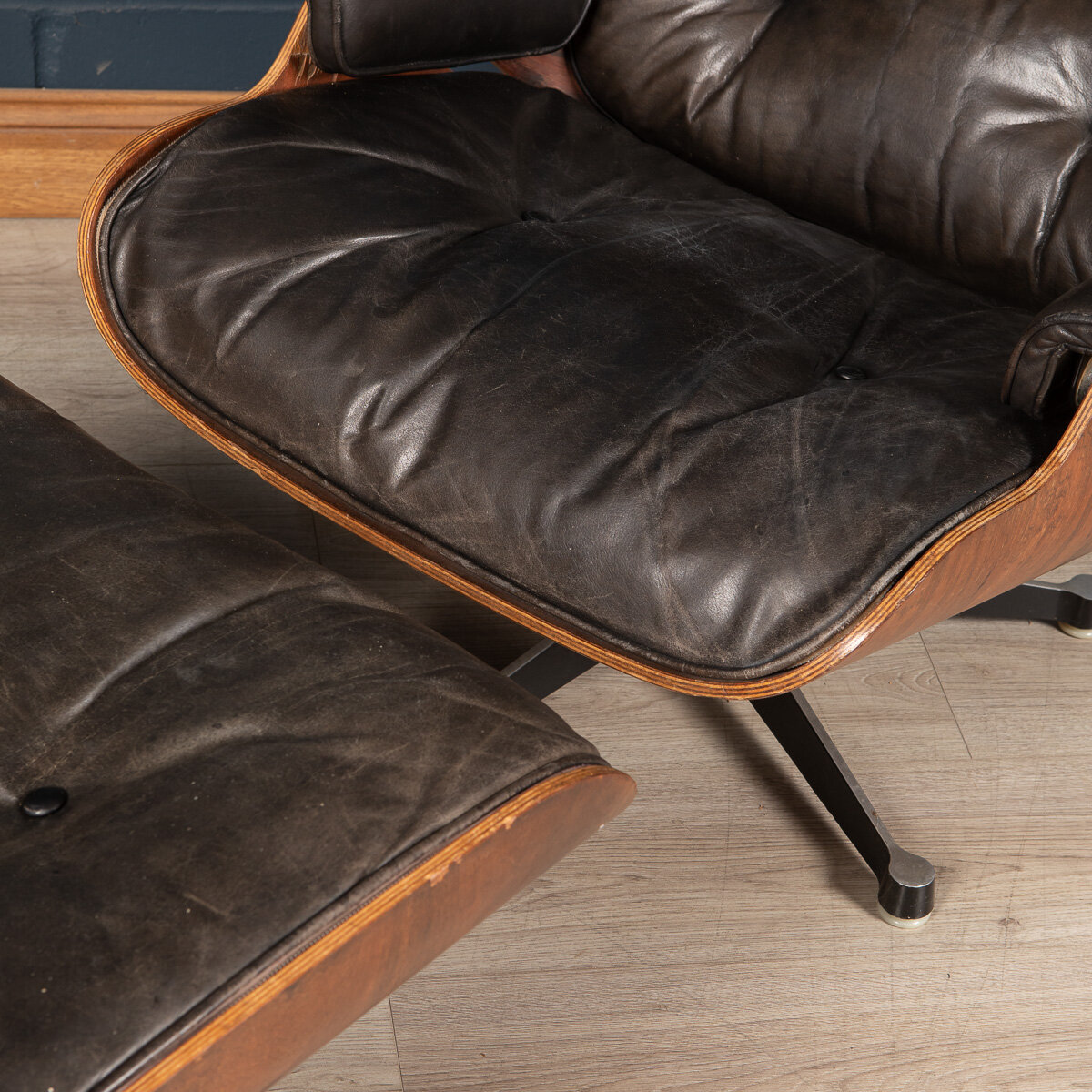A SECOND SERIES EAMES LOUNGE CHAIR & OTTOMAN, HERMAN MILLER c 1970
The Eames lounge chair and ottoman are furnishings made of molded plywood and leather, designed by Charles and Ray Eames for the Herman Miller furniture company. They are officially titled Eames Lounge (670) and Ottoman (671) and were released in 1956 after years of development by designers. It was the first chair that the Eameses designed for a high-end market. Examples of these furnishings are part of the permanent collection of New York's Museum of Modern Art.
Reference Number: B7130
DESCRIPTION
The Eames lounge chair and ottoman are furnishings made of molded plywood and leather, designed by Charles and Ray Eames for the Herman Miller furniture company. They are officially titled Eames Lounge (670) and Ottoman (671) and were released in 1956 after years of development by designers. It was the first chair that the Eameses designed for a high-end market. Examples of these furnishings are part of the permanent collection of New York's Museum of Modern Art.
Charles and Ray Eames sought to develop furniture that could be mass-produced and affordable, with the exception of the Eames Lounge Chair. This luxury item was inspired by the traditional English club chair. The Eames Lounge Chair is an icon of Modern style design. Charles's vision was for a chair with "the warm, receptive look of a well-used first baseman's mitt." The chair is composed of three curved plywood shells covered with veneer: the headrest, the backrest and the seat. The layers are glued together and shaped under heat and pressure. The shells and the seat cushions are essentially of the same shape, and composed of two curved forms interlocking to form a solid mass. The chair back and headrest are identical in proportion, as are the seat and the ottoman.
The products have changed in various ways over time. Beginning in 1956 and running through the very early 1990s, the shells were made up of five thin layers of plywood which were covered by a veneer of Brazilian rosewood. The use of Brazilian rosewood was discontinued in the early 1990s, and current production since then consists of seven layers of plywood covered by finishing veneers of cherry, walnut, Palisander rosewood (a sustainably grown wood with similar grain patterns to the original Brazilian versions), and other finishes. Small changes include the sets of spacers between the aluminium spines and the wood panels, originally of rubber, later hard plastic washers, and the number of screws securing the armrests, originally three, changed to two in second-series models, while the "domes of silence" (glides/feet) on the chair base originally had thinner screws attaching them to the aluminium base than those on later chairs, and the zipper around the cushions, either brown or black on early models, was later black only. Further, early ottomans had removable rubber slide-on feet with metal glides, and early labels are of oblong foil.
The Eameses constantly made use of new materials. The pair's first plywood chair—the Eames Lounge Chair Wood (LCW)—made use of a heavy rubber washer glued to the backrest of the chair and screwed to the lumbar support. These washers, which have come to be called "shock mounts", allow the backrest to flex slightly.[4] This technology was brought back in the 670 Lounge chair. The backrest and headrest are screwed together by a pair of aluminum supports. This unit is suspended on the seat via two connection points in the armrests. The armrests are screwed to shock mounts, which are connected only by glue to the interior of the backrest shell, allowing the backrest and headrest to flex when the chair is in use. This is part of the chair's unusual design, as well as its weakest link, as the shock mounts have been known to tear free, causing collapse and damage.
Other creative uses of materials include the seat cushions, which eschew standard stapled or nailed upholstery. Instead, the cushions are sewn with a zipper around the outer edge that connects them to a stiff plastic backing. The backing affixes to the plywood shells with a series of hidden clips and rings. This design, along with the hidden shock mounts in the armrest allow the outside veneer of the chair to be unmarred by screws or bolts. The chair has a low seat which is permanently fixed at a recline. The seat of the chair swivels on a cast aluminium base, with glides that are threaded so that the chair will remain level.
This chair is a second series chair, meaning it was part of the second run of production dating back to the 70s. Needless to say it is a design classic, winning numerous accolades over the decades, in production for well over 65 years it is as desirable to day as it has ever been.
Please note that our interior pieces are located at our Interior Design Showroom in Buckinghamshire, if you wish to see the item in person, please contact us to arrange an appointment.
CONDITION
In Good Condition - numerous areas of the outside veneer has chipped away over the years and the armrests have been reinforced at a later stage with crews visible from the underside of the armrest (please refer to photographs). Structurally very sound, leather has some wear and tear, adding charm to this timeless original chair over half a century old. Herman Miller label present to footstool, not to chair.
SIZE
CHAIR
Height: 82cm
Width: 83cm
Depth: 83cm
Seat Height: 38cm
OTTOMAN
Height: 42cm
Width: 65cm
Depth: 55cm







